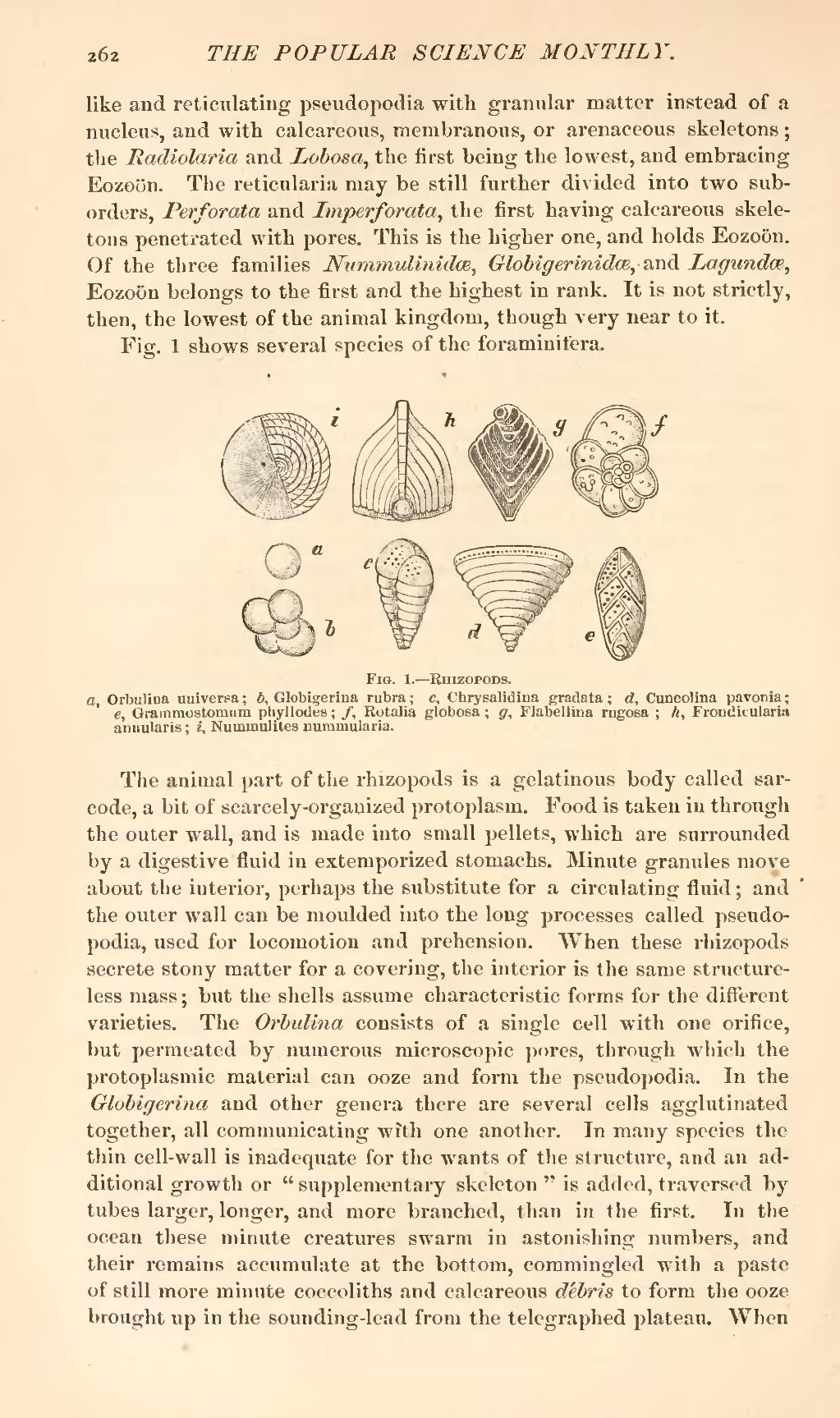like and reticulating pseudopodia with granular matter instead of a nucleus, and with calcareous, membranous, or arenaceous skeletons; the Radiolaria and Lobosa, the first being the lowest, and embracing Eozoön. The reticularis, may be still further divided into two sub-orders, Perforata and Imperforata, the first having calcareous skeletons penetrated with pores. This is the higher one, and holds Eozoön. Of the three families Nummulinidæ, Globigerinidæ, and Lagundæ, Eozoön belongs to the first and the highest in rank. It is not strictly, then, the lowest of the animal kingdom, though very near to it. Fig. 1 shows several species of the foraminifera.

Fig. 1.—Rhizopods.
a, Orbulina universa; b, Globigerina rubra; c, Chrysalidina gradata; d, Cuneolina pavonia; e, Grammostomum phyllodes; f, Rotalia globosa; g, Flabellina rugosa; h, Frondicularia annularis; i, Nummulites nummularia.
The animal part of the rhizopods is a gelatinous body called sarcode, a bit of scarcely organized protoplasm. Food is taken in through the outer wall, and is made into small pellets, which are surrounded by a digestive fluid in extemporized stomachs. Minute granules move about the interior, perhaps the substitute for a circulating fluid; and the outer wall can be moulded into the long processes called pseudopodia, used for locomotion and prehension. When these rhizopods secrete stony matter for a covering, the interior is the same structureless mass; but the shells assume characteristic forms for the different varieties. The Orbulina consists of a single cell with one orifice, but permeated by numerous microscopic pores, through which the protoplasmic material can ooze and form the pseudopodia. In the Globigerina and other genera there are several cells agglutinated together, all communicating with one another. In many species the thin cell-wall is inadequate for the wants of the structure, and an additional growth or "supplementary skeleton" is added, traversed by tubes larger, longer, and more branched, than in the first. In the ocean these minute creatures swarm in astonishing numbers, and their remains accumulate at the bottom, commingled with a paste of still more minute coccoliths and calcareous débris to form the ooze brought up in the sounding lead from the telegraphed plateau. When
